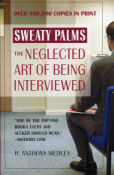|
The Crime of the Century (8/10)
by Tony
Medley
Two-part documentary
TV-MA.
This is
a scathing attack on the pharmaceutical industry in general and to
miscreants Purdue Pharma Research & Development and Insys Therapeutics
specifically. Living with pain must be horrible. People will do
virtually anything to get rid of, or reduce, the pain. That makes them
easy victims for sociopathic pharmaceutical entrepreneurs who
manufacture synthetic opiates like the
Sackler family of Purdue, who made and promoted Oxycontin, and John
Kapoor of Insys, who made Subsys, a
sublingual liquid form of the massively addictive drug fentanyl,
and this film goes after both with a vengeance, although Kapoor gets
most of the attention, probably because the Sacklers were wise enough to
successfully avoid damaging videos.
But
director Alex Gibney is known for one-sided presentations like
Enron: The
Smartest Guys in the Room (2005) that missed the main story
entirely to build a diatribe against another politician (Bush). So
whenever Gibney is involved my antennae go up.
So, as
an example of Gibney’s manipulations, Paul Goldenheim, Purdue Pharma VP,
lied to Congress. But there is a cut in the film clip of what Goldenheim
is saying. He starts talking, then there’s a cut from behind his head
and a shot has been inserted after he says, “…in February of 2000 was
the first time we became aware that something different was going on. In
February of 2000 we got a copy of a letter that then US Attorney Jay
McCloskey sent to physicians in Maine warning them of problems with
OxyContim that were occurring in certain communities…” then it cuts to a
view from behind him as the sound track has him saying, “…and since that
time I am proud of the response…” then it cuts back to the previous
frontal one shot as he continues speaking ”…as an executive of this
company I’m very proud to be working for this company…” The only answer
for the cut is that what he says has been inserted out of context
because he did not say it in the same sentence or breath of what came
before or what comes after. I’d like to know what was cut and why this
was inserted. I have little doubt that some nefarious editing was done.
Why?
But in
the end this is a good story exposing how there are extremely bad
players in the pharmaceutical industry who care much more about profits
than the welfare of its customers. Particularly egregious was/is Kapoor
who simply ignored the addictiveness of Subsys and kept urging his sales
reps to bribe doctors to prescribe higher and higher doses of the
medication so he could make more and more money. In fact, the whole
point was to get people addicted for life.
It’s
pretty amazing, also, how compliant doctors were in conspiring to get
their patients addicted, but Gibney pretty much passes over this, which,
in truth, is as bad and shocking as what the pharmaceutical companies
were doing, if not worse. Doctors have a fiduciary duty to their
patients and this duty was totally ignore by a plethora of MDs.
Government does not get off easy, though, as one person is quoted as
saying, “Policies are made by the manufacturers.” As an example, Gibney
shows politicians like GOP Representative (now Senator) Marsha Blackburn
attacking a bill that would put drastic controls on the distribution of
opioids and showing how much she and some of the other politicians
received in donations from the pharmaceutical industry. But it wasn’t
just Republicans, which is what the politically biased Gibney always
attacks, because the bill passed in a huge bipartisan victory. However,
Gibney only shows Republicans attacking the bill. That’s a disgrace, but
it’s what to be expected from Gibney.
The
problem that I see, however, is that opioids apparently do work. People
in pain did get relief. This film ignores going into the question of
whether or not someone could take a strictly controlled prescription of
opioids that would guard against addiction but allow the patient to get
the desperately needed relief from pain. Like in his shallow, one-sided
view on Enron, Gibney ignores investigating the solution to the pain
problem entirely. It’s probably too complex for poor Alex to bother
with.
One
disturbing aspect is that Purdue hired Rudy Giulianni to flack for them.
That was very disappointing. But I guess all politicians are alike. If
you pay them they’ll say or do anything. Shame on Rudy.
What I
kept thinking during this entire documentary was the way the government
and Moderna and Pfizer are doing everything possible to get everyone in
the United States (and world) to take their untested mRNA gene therapy
shots which are being misrepresented as “vaccines,” which they are not.
Moderna and Pfizer are making billions while people line up to take
their shots without the knowledge that they are untested and
experimental, trusting their government and the pharmaceuticals.
According to one report, together Moderna and Pfizer have captured
market share and, by the end of 2020, Pfizer had achieved a 180%
increase in revenue
and Moderna had
scored a 3,900% increase. Maybe after potential shot recipients see this
movie they won’t be so trusting. HBO.
After my review was
published, Andy Grove, the film's editor, responded as follows:
|
